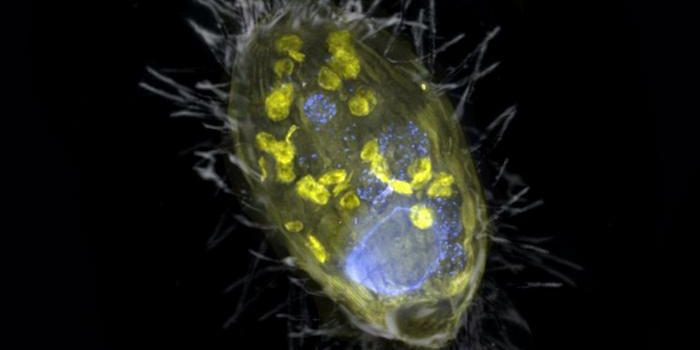Sunflower pollen: the most versatile compound in nature
In yet another instance of taking inspiration from nature, a research team from Nanyang Technological University, Singapore and Sungkyunkwan University, South Korea, has developed a sunflower pollen sponge capable of absorbing contaminants in water. The hydrophobic sponge could do wonders for cleaning up oil spills while offering an alternative to chemical dispersants that are ultimately unrecyclable, expensive, and pose additional threats to ecosystems. The findings from the study are published in the journal Advanced Functional Materials.
The researchers behind the study have demonstrated the sponge’s ability to soak up gasoline and motor oil with comparable effectiveness to commercial oil absorbents. Lead researcher Professor Cho Nam-Joon from the NTU School of Materials Science and Engineering commented: "By fine-tuning the material properties of pollen, our team successfully developed a sponge that can selectively target oil in contaminated water sources and absorb it. Using a material that is found abundantly in nature also makes the sponge affordable, biodegradable, and eco-friendly."
The team at NTU has been investigating different uses for pollen, including pollen paper, as shown in the video above. Professor Cho explains, "Pollen that is not used for plant pollination is often considered biological waste. Through our work, we try to find new uses for this 'waste' and turn it into a natural resource that is renewable, affordable, and biodegradable. Pollen is also biocompatible. It does not cause an immunological, allergic or toxic reaction when exposed to body tissues, making it potentially suitable for applications such as wound dressing, prosthetics, and implantable electronics."
In order to convert pollen into the sponge material, pollen grains must first go through a process that removes the hard, oily coating on their surface. They are then soaked in alkaline conditions for three days before they become a gel-like material that exhibits the 3D porous structures typical of sponges. The scientists later coated a hydrophobic layer of stearic acid on the material, ensuring that oily contaminants, and not water, will be absorbed by the 3D structures. They then tested the absorption performance of the pollen sponge with a range of oils and organic solvents, including gasoline, pump oil, and n-hexane.
"Collectively, these results demonstrate that the pollen sponge can selectively absorb and release oil contaminants and has similar performance levels to commercial oil absorbents while demonstrating compelling properties such as low cost, biocompatibility, and sustainable production," said Professor Cho.
While the pollen sponges the team has developed are not yet large enough for commercial use, the researchers intend to address this in ongoing studies. "We hope our innovative pollen materials can one day replace widely-used plastics and help to curb the global issue of plastic pollution," concludes Cho.
Sources: Advanced Functional Materials, Science Daily








